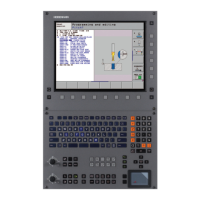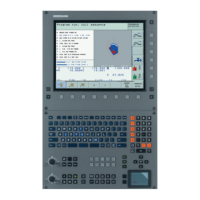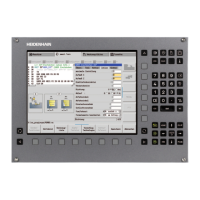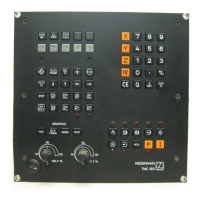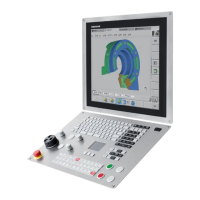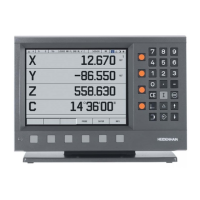July 2010 18 – 291
8 Reference the gantry axes (master and slave).
8 Read the values of the REF display for the master and slave axis. These values differ slightly.
8 Add the difference of the displayed values to the value entered in MP 960.x for the axis with
the remounted encoder.
8 Enter the result.
Example 1: New position encoder of the slave axis was remounted.
Example 2: New position encoder of the master axis was remounted
8 Check, whether the new axis has been reset correctly (master or slave):
If the algebraic sign is wrong, the display difference is twice as large.
There is no display difference if the calculation is performed correctly (the position values of
master and slave axis are equal).
8 Reset MP 860.x to the original value.
8 Check the function of the tool changer.
8 Set the display to ACTL.
8 If necessary, instruct the customer to mill a work piece and check it for dimensional accuracy.
Further information --> See “Reference Run” on page 19 – 317.
A: REF value for master axis displayed 500.000 mm
A: REF value for slave axis displayed 500.345 mm
C: Display difference of A and B +0.345 mm
D: Original entry in MP 960.x for the slave axis +2000.000 mm
F: C + D = New entry in MP 960.x 2000.345 mm
A: REF value for master axis displayed 499.678 mm
A: REF value for slave axis displayed 500.000 mm
C: Display difference of A and B +0.322 mm
D: Original entry in MP 960.x for the master axis +0.000 mm
F: C + D = New entry in MP 960.x 0.322 mm
Activate the axis compensations and kinematics settings and determine them again, if
necessary. --> Ask the machine manufacturer.
The machine manufacturer could also control the geometry of the gantry axes.

